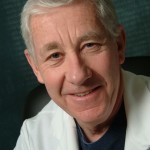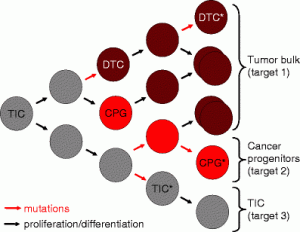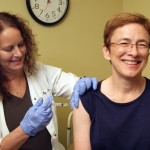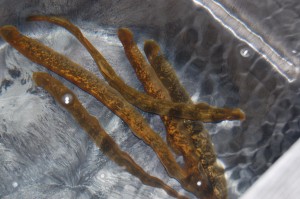Imagine that an elderly relative has been having difficulty remembering appointments and acquaintances’ names, or even what happened yesterday. Memory problems can be signs of mild cognitive impairment (MCI), a prelude to Alzheimer’s disease.
Scientists believe that the outward effects of the slow damage that comes from Alzheimer’s only show up after the damage has been accumulating for years. However, memory difficulties can also be the result of stress or another health problem. Patients thought to have MCI at an initial doctor’s visit sometimes improve later.
That’s why researchers at Emory’s Alzheimer’s Disease Research Center have been testing noninvasive imaging approaches to distinguishing MCI from healthy aging and Alzheimer’s. Their goal is to identify individuals at risk of developing Alzheimer’s, at a time when intervention can make a difference in how the disease progresses.
“We believe that imaging technology may help us find the signature changes in brain structure that are specific to MCI,” says Felicia Goldstein, PhD, associate professor of neurology.

Color coded diffusion tensor image (DTI) of a brain section from a healthy individual (A) showed a thick and intact corpus callosum (orange color). However, a thin and narrow corpus callosum is seen in an AD patient (C) due to the degeneration of this white matter structure. Courtesy of Hui Mao.
Two recent papers highlight the use of diffusion tensor imaging, an advanced form of magnetic resonance imaging.
The first paper was published by Brain Imaging and Behavior with Goldstein as first author, in collaboration with Hui Mao, PhD, associate professor of radiology, and ADRC colleagues.
It examines diffusion tensor imaging as a way to probe the integrity of the brain’s white matter, and compares it with tests of memory and behavior traditionally used to diagnose MCI and Alzheimer’s.
White matter appears white because of the density of axons, the signal-carrying cables allowing communication between different brain regions responsible for complicated tasks such as language and memory.
Diffusion tensor imaging allows researchers to see white matter by gauging the ability of water to diffuse in different directions, because a bundle of axons tends to restrict the movement of water in the brain.
Goldstein and her colleagues found that patients diagnosed with “amnestic†MCI showed greater loss of white matter integrity in a certain part of the brain — the medial temporal lobe – than cognitively normal controls of similar age. This loss of white matter was linked with poor recall of words and stories.
The second paper, with Liya Wang, PhD, a senior research associate in Mao’s laboratory as first author, was published by the American Journal of Neuroradiology in April. Here the authors try combining probing white matter integrity with a MRI measure of whether the brain has shrunk as a result of disease.
Combining the two methods improves the accuracy of MCI diagnosis with respect to either alone, the authors found.
Mao notes that Emory has been participating in a multi-center study called ADNI (Alzheimer’s Disease Neuroimaging Initiative). Diffusion tensor imaging is a relatively new technique and could add information to future large-scale Alzheimer’s imaging studies, he says.
The Dana Foundation’s BrainWorks newsletter had an article recently on Alzheimer’s and brain imaging.
Posted on
August 7, 2009 by
Quinn Eastman
in Uncategorized
















 A new method of rapidly producing highly targeted monoclonal antibodies could soon be used to rapidly diagnose H1N1 influenza. Just a month after vaccinating people with a seasonal flu vaccine, the researchers were able to use just a few tablespoons of the vaccinated individuals’ blood to generate antibodies against that specific strain of flu. The
A new method of rapidly producing highly targeted monoclonal antibodies could soon be used to rapidly diagnose H1N1 influenza. Just a month after vaccinating people with a seasonal flu vaccine, the researchers were able to use just a few tablespoons of the vaccinated individuals’ blood to generate antibodies against that specific strain of flu. The 